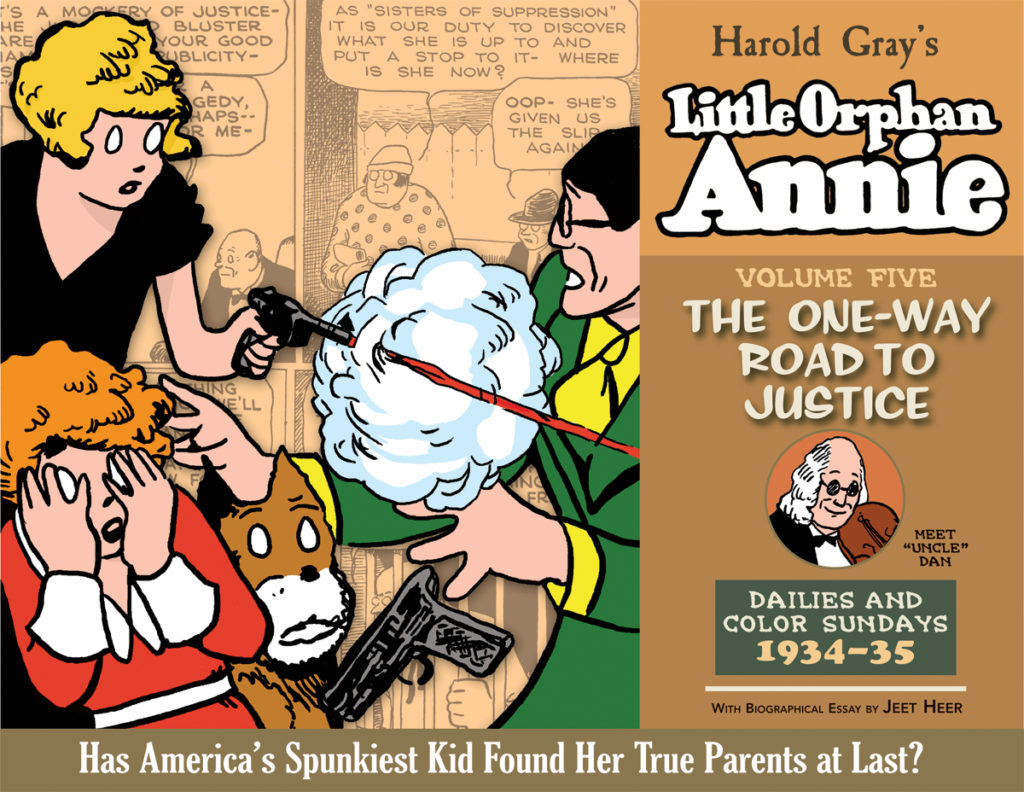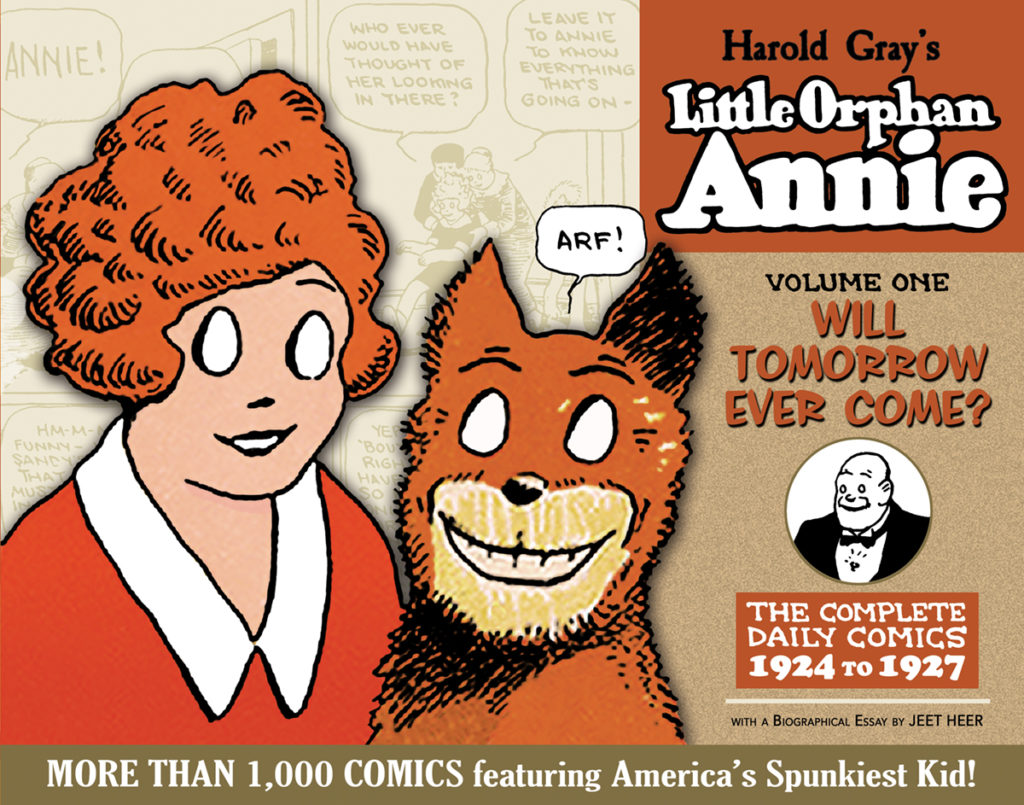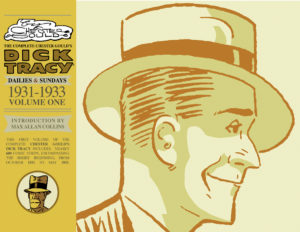
Introducing the lone square-jawed hero who holds the line against the underworld. Meet Dick Tracy, his girlfriend Tess Trueheart, Chief Brandon, and Detective Pat Patton as they fight it out with gangsters such as Big Boy, Stooge Viller, Larceny Lu, and grifter Steve the Tramp, who’s enslaved a young boy named “Junior” to be his criminal accomplice.
- IDW, December 2006
- ISBN 978-1-60010-036-8
- 9.5″ x 7″, 364 pages
- $29.99 USD
- Order online: Amazon
This is pre-Library Of American Comics and published by IDW with Ted Adams as editor and Ashley Wood and Robbie Robbins on design. Along with strips from 1931-1933 are an introduction by Max Allan Collins and a 1980 interview with Gould.
When thinking of Dick Tracy, there is almost a century’s worth of cultural baggage attached, from the radio watch to the Beatty and Madonna movie. Here we have the first volume of the comic strip, collecting 1931-1933, and nothing of what you know of Dick Tracy is here.
I’m reading in order from this volume one onward, so comparisons will come as I progress. For now, all I know of Dick Tracy newspaper strips are what I’ve absorbed from the zeitgeist.

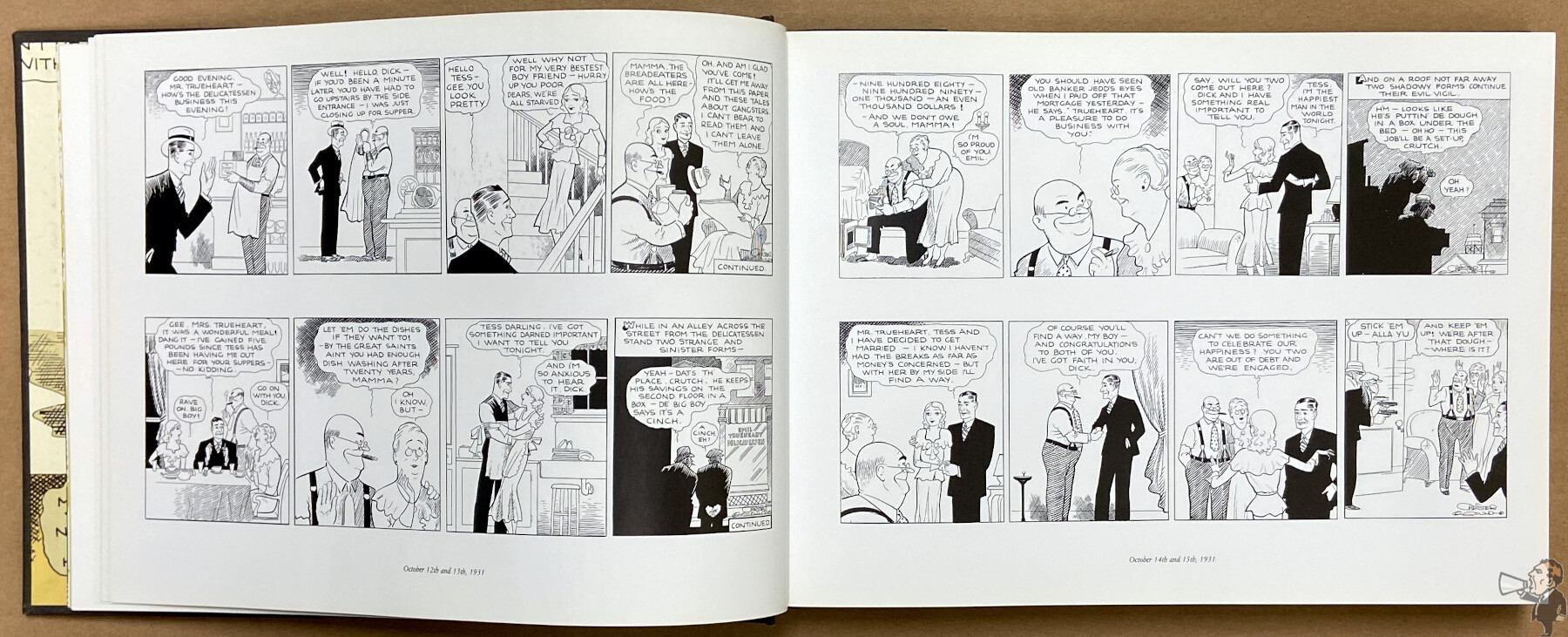

The elements are there as a beginning: Tracy is a hard-as-nails detective that gets the job done, no matter what. He has his sidekick Pat, trusty girlfriend Tess, and boy ward Junior. No gadgets like the wristwatch radio and the fedora and trench coat get limited play. This is the early days of Tracy: fists and bullets get the work done.
We are given a multitude of villains, each with something unique and slightly off-kilter, but nothing like the rogue’s gallery he’s known for in later years. Larceny Lu and “Stooge” Viller are personal favourites because they exude personality and have a very defined look.
Gould is feeling it all out, seeing what works and what doesn’t. A lot of the artwork has a two-dimensional feel, as though the characters are flattened against the background. But that occurs in a mix of otherwise normal panels, with Gould providing fully realized and naturalistic bodies and poses. When we close our eyes and think of what Dick Tracy looks like, it’s the classic two-dimensional profile.
From the get-go, Gould has emotion, action, expression and visual characterization down pat. Environments are fleshed out, and texture employed everywhere. It becomes so ingrained in the panels that when someone’s outfit lacks texture, like Tess’s dress or Tracey’s trenchcoat or a police uniform, it pops on the page.
Like a lot of early adventure strips, Tracy’s first years are violent. Danger is everywhere, but violence is assured by both the police and the criminals. Steve the Tramp is particularly vicious, even to a boy. But really, everyone is vicious on both sides. Crime occurs and Tracy shuts it down. While Junior is there for perhaps a comical element, it’s Tess that provides humanity and depth to the strip and to Tracy’s character.
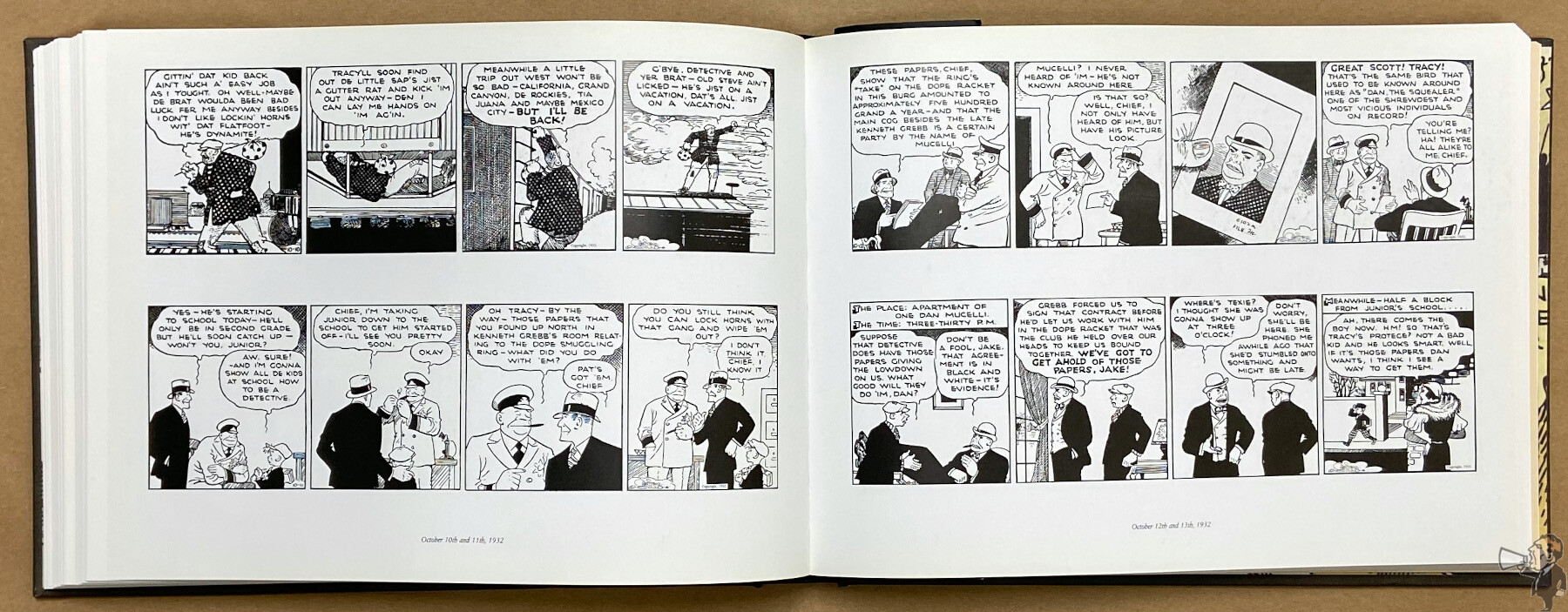
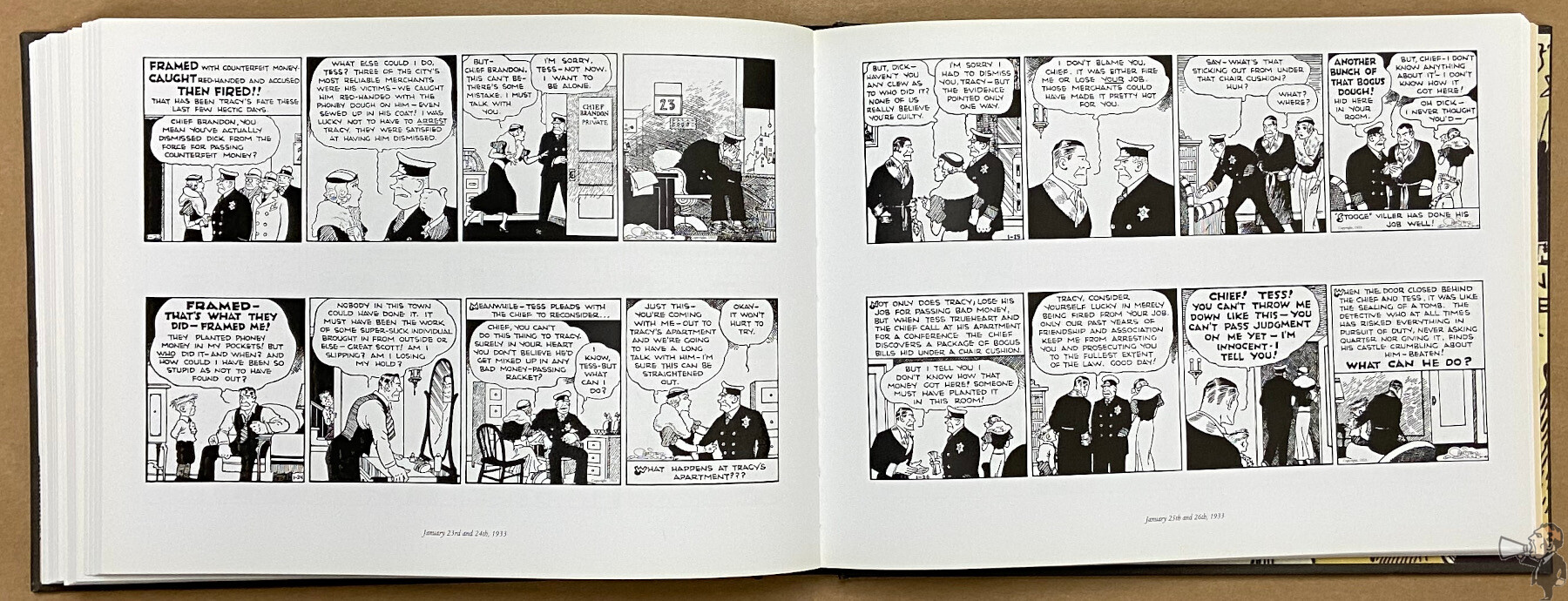
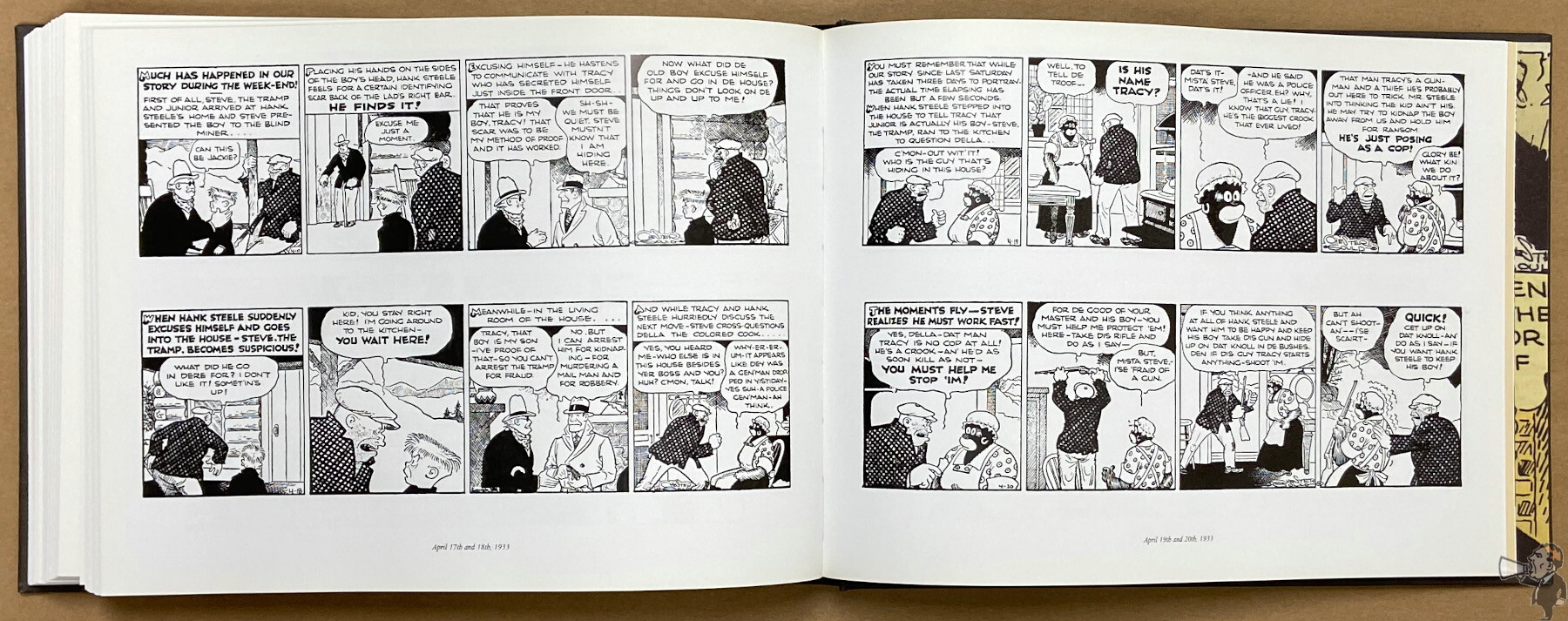
This is early on in what is now considered the modern golden age of reprints. The size is a bit small at 9.5″ x 7″, and both dailies and Sundays in continuity are presented in black and white. This makes the Sundays quite reduced. The glossy paper adds pop to the blacks, and that paper is quite heavy. It’s all wrapped in a sewn binding hardcover with a dust jacket.
The design by Wood and Robbins is clean with the single colour carrying over from the dust jacket throughout. Unifying and effective.
I don’t read any additional included material until I’ve read the body of the volume. Collins puts these early strips in contrast to other media at the time and what work Gould would have used as an influence. The interview covers Gould’s early career and how Tracy ended up in production. Both add an excellent background to the strips themselves.
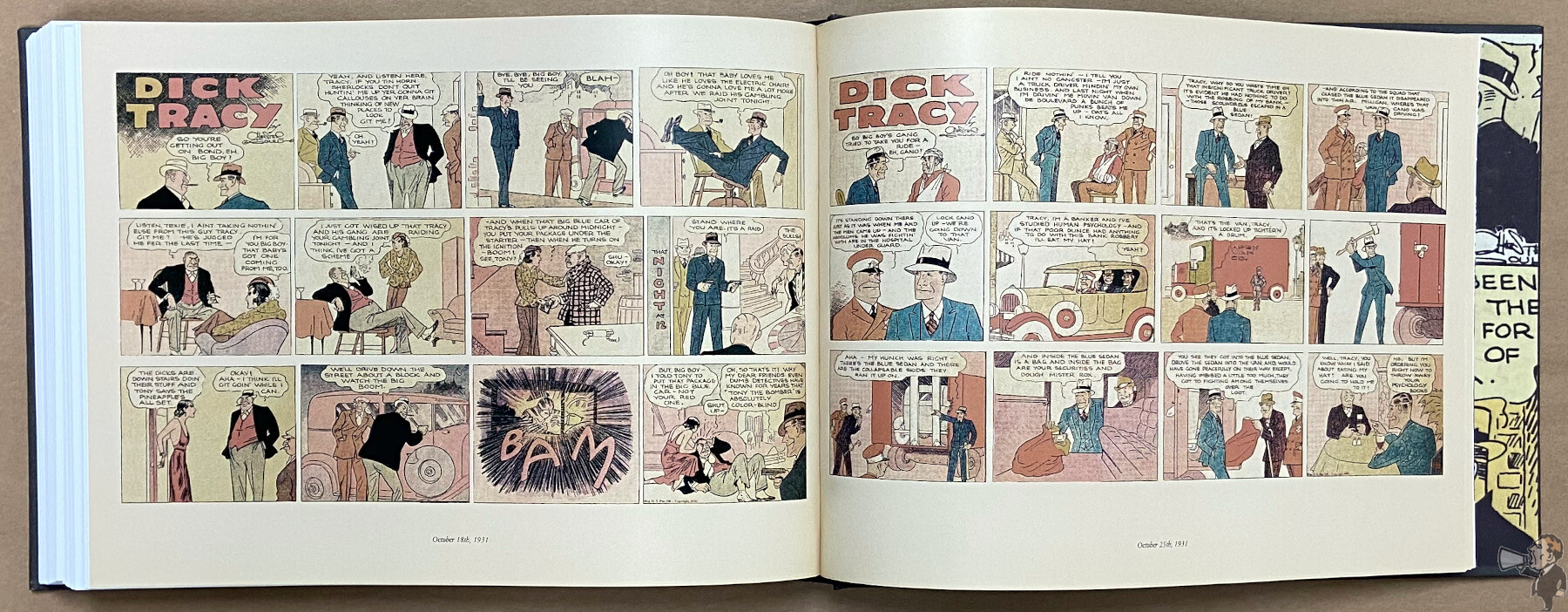
At the end is a colour collection of non-continuity Sundays, and is the weakest element. The reproduction is fair, but the colours are faded and there are some visual issues most likely related to scanning and cleaning the art; pixelation and softness. It’s appreciated the Sundays are there for completeness, but they don’t present nearly as well as the rest of the volume.
This is the beginning of one of the most famous detectives in pop culture, but it’s not that detective yet. A great read for people who enjoy historical strips, and a must for those who want to dig into all that is Dick Tracy. For anyone else, borrow a copy from the library or a friend.


